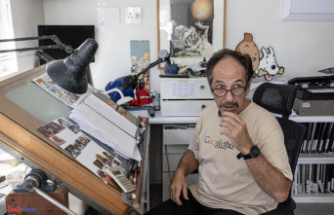"Our technology has achieved, for the first time in the world, draw the invisible: the taste of a wine". This presents the agronomist engineer Diego Fernández Pons creation of him, Wine Luthier, a tool that represents and quantifies objectivity the taste sensations offered by a wine.
After two decades dedicated to viticulture, the Valencian engineer ended up becoming the same reflection every time he catched a wine: ENOLOGY could not continue based solely on subjective criteria. Mathematics, data analysis and data science should be broken into the wine world, it was crying. That thought ended evolving in an eight-year investigation in which more than 300 tatters, a score of winemakers and the Polytechnic University of Valencia have been involved.
Today, Wine Luthier's winery has 12,000 wines analyzed and drawn. According to Fernández Pons, with the objective information provided by the tool, a unique wine producer, of terroir, can accurately know the taste difference of his plots; Bodegas analyze the difference between their wines and others of greater commercial success and can adopt their styles; Importers verify the lots and vintages of suppliers and distributors can perform demographic studies of preferred flavor according to age or gender.
The Startup is also developing a consumer-directed software that is available to choose from wine in a restaurant or in the supermarket. "An application that will allow to know the individual taste preference of each person through its usual consumption and that, crossing it with our data, will recommend wines that are in their gustative profile exactly," anticipates the soul of the project.
How does it work? When a wine reaches the laboratory, it is subjected to a physical and chemical analysis of a score of parameters. The AI visualizes the flavor perceived by the client of any wine, representing it graphically in a grid in its four axes Directors: Acidity Printing, CRISP; Volume in Boca, Mellow; sweetness, Sweet, and solidity, Grip. Subsequently, the individual gustatory balance of each wine is represented in the WPS system (Wine Positioning System), which accurately describes the taste difference between any number of wines and allows to offer customer-made solutions.
According to the studies carried out by the company, the coincidence between the flavor detected by a professional and the data provided by Wine Luthier is close to 95%, "A huge coincidence," adds the founder, "If we take into account that in a panel of Wine tastings formed by experts are allowed differences of up to 30% ".
The team of this young company - Cominco Enologés, a food technologist, a mathematician specialized in Blurred Algebra and a senior manager - has managed to put the nose in the universe of wine; This same month, he received the Bodegas Emilio Moro Innovation Award, imposing a hundred projects as a reference winery in innovation in the wine world.
But in Wine Luthier they do not settle for triumph in their own ecosystem. "We are developing projects for horticultural and conserving industries, we are convinced that, having managed to objectively describe the taste of the most complex food in the world, wine, we can follow a similar line of work with less complicated a priori food."
Date Of Update: 09 October 2021, 09:13











